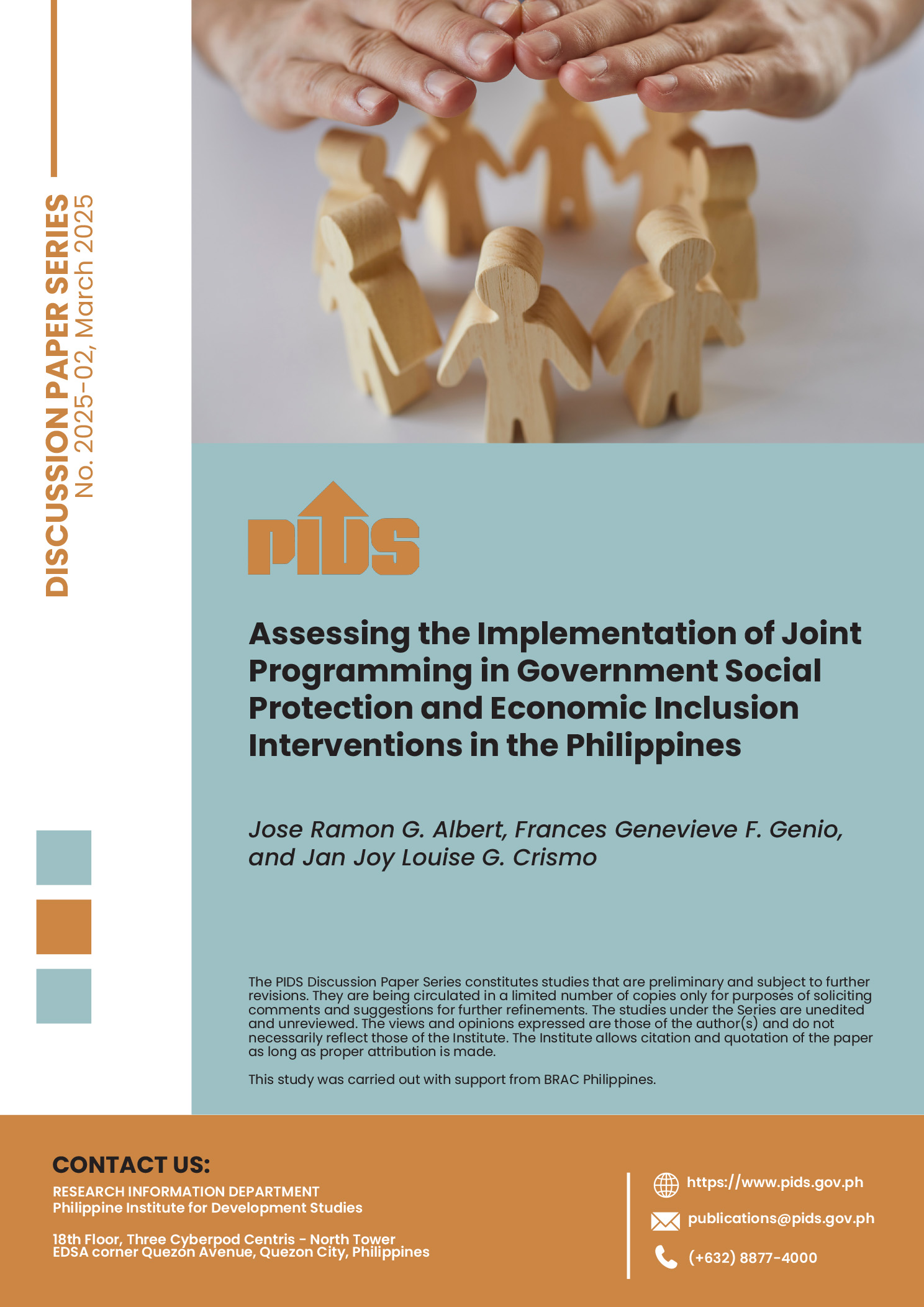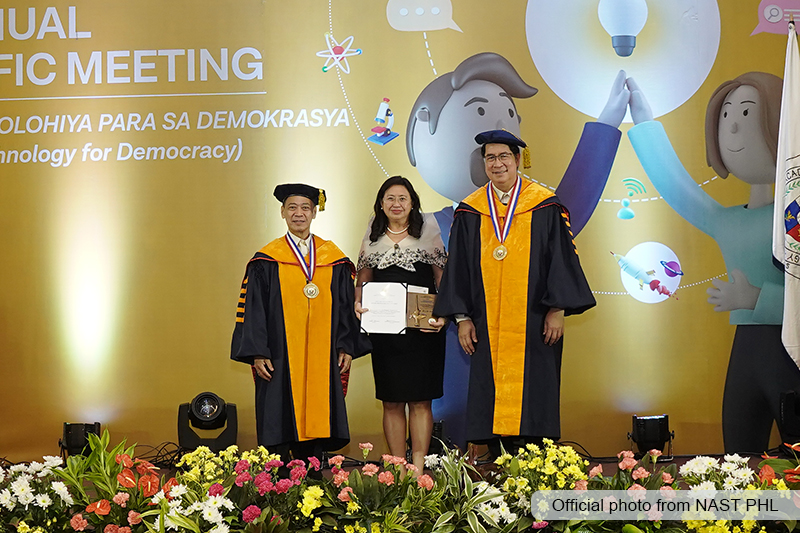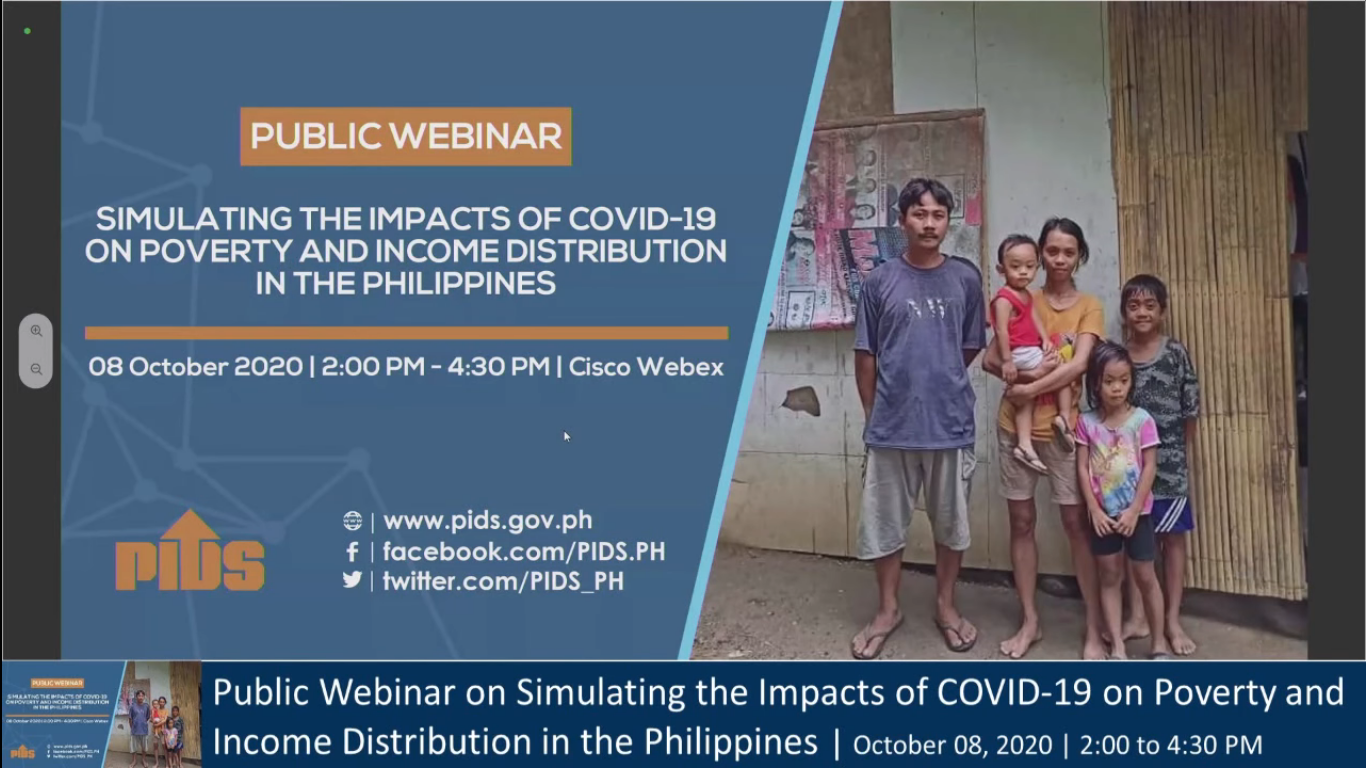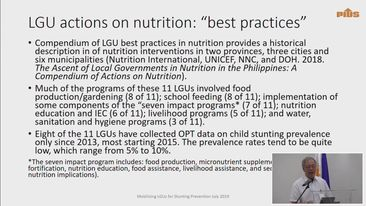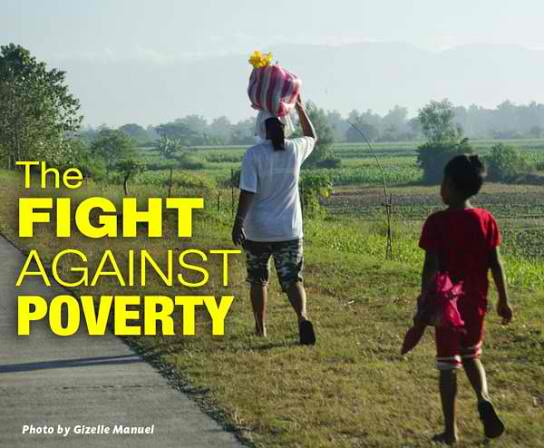
The latest poverty statistics released by the National Statistical Coordination Board (NSCB) have attracted considerable attention as they clearly show that the country has still got a long way to go in its fight against poverty. There is no significant reduction in poverty incidence as of the first semester of 2012 compared with 2006 and 2009 figures from the triennial Family Income and Expenditure Survey (FIES). The NSCB estimated poverty incidence at 27.9 percent of the population during the first half of 2012, a figure not statistically different from the rate of 28.6 recorded in 2009.
PIDS has made groundbreaking research on the complex nature and multidimensional aspects of poverty. It has also helped to enhance poverty measurement which is critical for the government in carrying out the task of poverty reduction. Who and where are the poor? How is the poverty line drawn? Beneath aggregate poverty measures, there is "chronic" and "transient" poverty, and different kinds of interventions are needed to effectively target each type. There is still much leeway to tighten the eligibility criteria for poverty-reduction programs such as the Pantawid Pamilyang Pilipino Program, the Philippine version of conditional cash transfers.
Find out more about PIDS studies on poverty. Understand the issues behind poverty measurement, dynamics of poverty, poverty's relation to agriculture, trends in income and poverty distribution, evaluation of poverty situation, effectiveness of government poverty-reduction programs, among others. The ultimate goal of development is to significantly reduce the ranks of the poor, an objective that, more than anything else, requires evidence-based policymaking.
- Issues on Counting the Poor
- Reading between the Poverty Lines: Revisions in the Official Poverty Thresholds
- Poverty and Agriculture in the Philippines: Trends in Income Poverty and Distribution
- Dynamics of Poverty in the Philippines: Distinguishing the Chronic from the Transient Poor
- Expanding Social Health Insurance Coverage: New Issues and Challenges
- Understanding the Recent Rise in Poverty Incidence: a Look at Growth and Income Distribution Effects
- Are We Winning the Fight against Poverty? An Assessment of the Poverty Situation in the Philippines
- Pantawid Pamilyang Pilipino: Why "Deepening" Matters in Achieving Its Human Capital Objectives
- Promoting Inclusive Growth through the 4Ps
- Conditional Cash Transfer Program in the Philippines: Is It Reaching the Extremely Poor?


